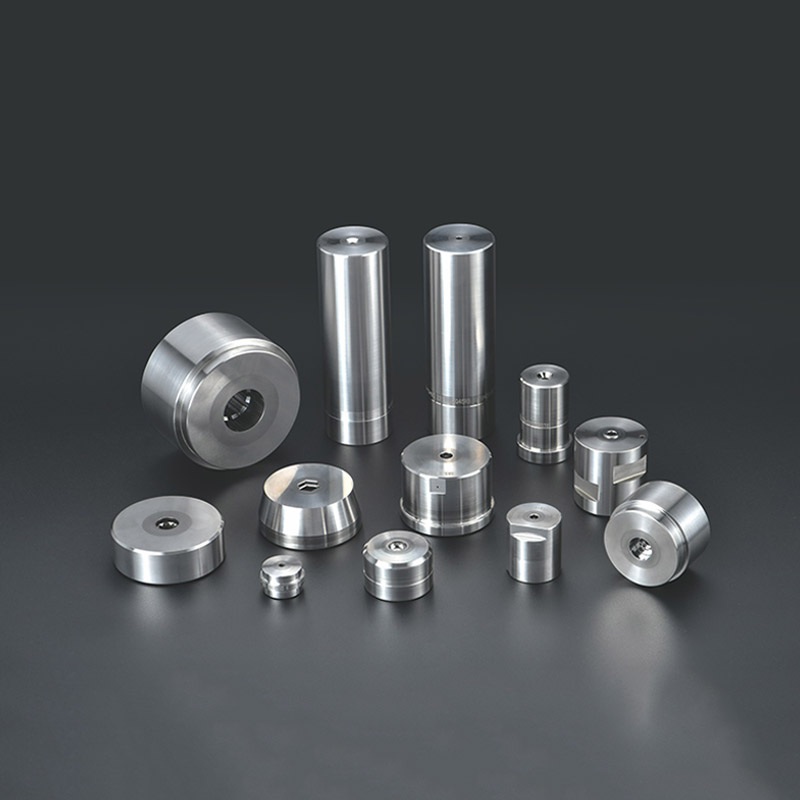Tungsten Carbide Dies: Properties, Applications, and Maintenance
Introduction
Tungsten Carbide (WC) dies are precision tools widely used in manufacturing industries for shaping, forming, or cutting materials such as metals, wires, and polymers. Composed of tungsten carbide particles bonded with a cobalt or nickel matrix, these dies exhibit exceptional hardness, wear resistance, and thermal stability. Below is a detailed exploration of their properties, applications, and maintenance protocols.

Key Characteristics of Tungsten Carbide Dies
1. Exceptional Hardness: Tungsten Carbide Dies typically achieve a hardness of 1,400–2,000 HV (Vickers Hardness), surpassing most tool steels and enabling prolonged service life under abrasive conditions.
2. High Wear Resistance: With a wear rate of less than 5×10⁻⁷ mm³/Nm under standard conditions, WC dies outperform conventional steel dies in high-friction applications, reducing downtime for replacements.
3. Thermal Stability: These dies maintain structural integrity at temperatures up to 1,000°C (1,832°F), making them suitable for hot-forming processes like wire drawing or extrusion.
4. Corrosion Resistance: The cobalt/nickel binder provides moderate corrosion resistance, with a corrosion rate of <0.1 mm/year in mildly acidic or alkaline environments.
5. Compressive Strength: WC dies exhibit compressive strengths exceeding 6,000 MPa, ensuring minimal deformation under high-pressure operations.
Applications of Tungsten Carbide Dies
1. Wire Drawing: Used to reduce wire diameters (e.g., from 10 mm to 0.01 mm) in industries producing electrical cables, springs, and fencing. The dies' smooth surface finish (Ra < 0.1 μm) ensures uniform wire quality.
2. Extrusion: Employed in aluminum or copper extrusion at pressures up to 1,500 MPa, achieving tolerances of ±0.02 mm for profiles in automotive or aerospace components.
3. Powder Compaction: In pharmaceutical or metallurgical industries, WC dies compress powders at 400–800 MPa to form tablets or green compacts with densities >95% theoretical.
4. Cold Heading: For fastener manufacturing, these dies withstand impact loads of 50–200 kN while maintaining dimensional accuracy (±0.01 mm) over 1 million cycles.
5. Tube and Pipe Manufacturing: WC dies shape seamless tubes with wall thicknesses as low as 0.05 mm, critical for heat exchangers and hydraulic systems.
Maintenance Best Practices
1. Cleaning: After each use, remove debris using ultrasonic cleaners with pH-neutral solvents. Avoid abrasive brushes that may scratch the die surface (scratch depth >5 μm accelerates wear).
2. Lubrication: Apply high-viscosity lubricants (ISO VG 100–220) during operation to reduce friction coefficients below 0.1. For wire drawing, use soap-based lubricants at 40–80°C.
3. Inspection: Measure die bore dimensions weekly using air gauges or laser micrometers. Replace dies if wear exceeds 0.5% of the nominal diameter.
4. Storage: Store in climate-controlled environments (20±2°C, RH <40%) with desiccants to prevent moisture-induced binder corrosion.
5. Reconditioning: For minor surface defects (<20 μm depth), polish with diamond pastes (grit size 1–5 μm). Severe damage requires professional regrinding with 0.1 μm tolerance.
Tungsten carbide dies are indispensable in precision manufacturing due to their unmatched mechanical properties. Proper maintenance ensures optimal performance, extending service life by 200–300% compared to neglected tools. Industries leveraging these dies benefit from reduced scrap rates (<0.5%) and enhanced production efficiency.











